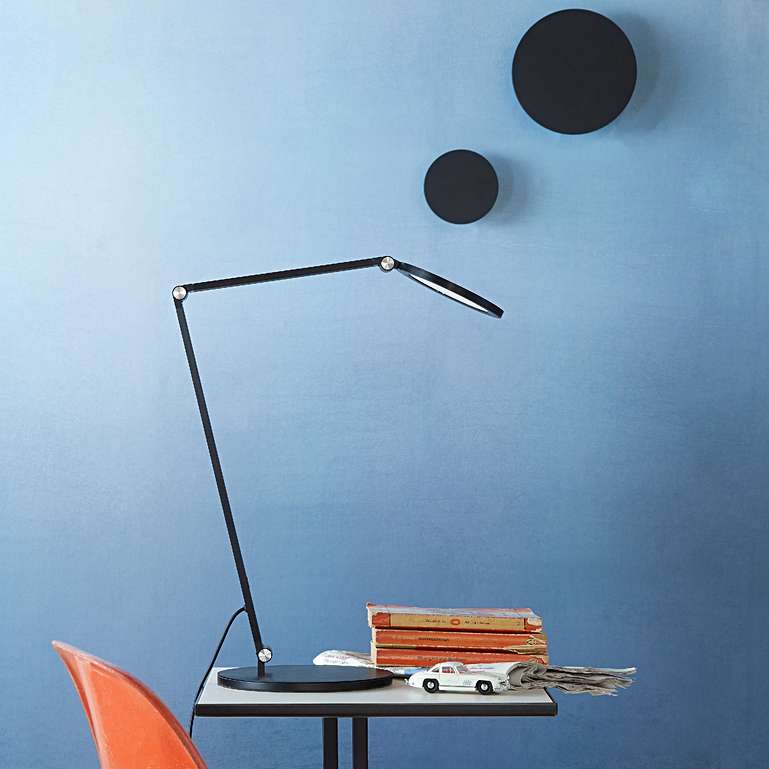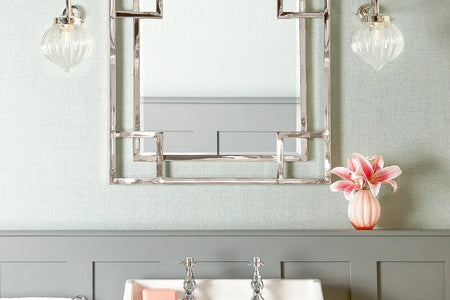 Nevada desk light
Nevada desk light
Whether – like most of us – you’re currently working from home every day, or if you’ve requisitioned another space for a spot of home schooling, the right desk lamp is a key element of a good home working environment (we would argue, the key element). So when buying a desk light it makes sense to do a bit of research to find the ideal one. Here’s Pooky’s guide to choosing a desk lamp for a study area – including both the practical and interior design considerations - PLUS some top tips for making a beautiful home office..
 Skitty desk light
Skitty desk light
What is the desk light for?
The most obvious use for a desk lamp is for practical task lighting – that is, because you need to light up a specific area so that you can see what you’re reading or typing (or, if you’re retro, writing with a pen). But if you’re more into the interior design side of things, desk lamps can be used for accent lighting or ambient lighting in the composition of a room. For example, if your desk is in an open plan living space rather than a dedicated office, you might want to use a directed desk light to highlight an ornament or feature. Or when layering light in a room, desk lamps can work alongside table lamps, ceiling lights and floor lamps to create an overall ambience (for more on lighting design, see our complete guide to layering light in your home here.) Finally, a desk lamp can also be purely decorative – in other words, designed to look beautiful on your desk, possibly without even having a working bulb inside. Russula desk light
Russula desk light
In reality, you will probably want to it do some combination of the ambient, accent, task and decorative lighting jobs, or all of them. The ideal desk light therefore will fulfil your specific lighting purpose, so the first question when choosing one is: what is the desk lamp for? Once you’ve decided that, here are the main questions to consider – first some practical ones, and then some questions of style…
Desk lamps – practical things to think about
If you need the desk lamp for task lighting, the main practical considerations are: Working area – the taller the lamp the more desk area it will light up, so work out how much space you need to illuminate and make sure the lamp has a stand with enough height. If you’ve got a huge desk you’ll need a tall lamp – and perhaps one with a long adjustable stand that can reach across the surface. Mo desk light
Mo desk light
Position and direction – if you do different kinds of work (reading, drawing etc) requiring different intensities of light, or have a couple of working areas in your desk space, you may need the flexibility of a desk lamp that can be manipulated and angled. The right amount of light – with so many people now spending so much of their lives at desks staring at computer screens, eye strain is a real concern, and you need more light as you get older. LED bulbs are generally best for task lighting, and you’ll want an LED of at least 5-10 watts for most desk work purposes.
 Gerry LED reading light
Gerry LED reading light
Desk lamps – style and design things to think about
If you never actually do any work but want something that looks good, there are plenty of options… Layering – as all good interior designers know, creating an atmosphere in a room is all about layering light. A desk lamp is another weapon in your lighting design armoury, when coordinated with your floor lamps, table lamps, overhead lights and natural light. You can wire up a desk lamp along with your other light sources to a central control panel, with pre-set lighting ‘scenes’ for different moods and times of day. Accenting – a lamp with a tall stand that can be angled is an ideal tool for spotlighting a feature, such as beautiful object or an ornamental corner of a room. Make sure you get a lamp that can be pointed, and use a light that is around three times brighter than the general ambient light in the room. Decoration – these days, desk lamps come in all sorts of interesting and contemporary styles – classic, industrial, retro, modern – so you’ll have no trouble finding something that blends with the rest of your décor, and becomes a design feature in itself, even if you never do a stroke of work at your desk.Pooky tips for a beautiful, practical home office
 Drax desk light
Drax desk light
1) Plan it out
Whether it’s a whole room or a nook under the stairs, work out how you can best use the space based on your needs. If you just use a laptop and no paper a small desk will suffice. Do you need storage - a filing cabinet, a bookcase? Will you have clients or suppliers to visit, and need a comfy chair or two?
2) Invest in an ergonomic office chair
Your lower back and neck will thank you in the long run.
3) Add some green
If you’ve got the room, bring in the outside with a house plant. There’s plenty of scientific evidence that plants are good for your mental wellbeing and physical health too, removing air pollutants from office spaces. Rubber trees, English ivy and peace lilies are all good.
4) Create space with a mirror
If your office space is on the wee side, a cunningly-positioned mirror can open it up and make you feel less like you’re working in a wardrobe.
5) Accessorise
Little touches like a colourful rug or judiciously-selected curtains can make all the difference to your mood when you’re working away indoors all day. Don’t stint on the little things.
And of course, most importantly, there’s the lighting - which should be as stylish as it is practical. Check out Pooky’s range of gorgeous desk lights here.










